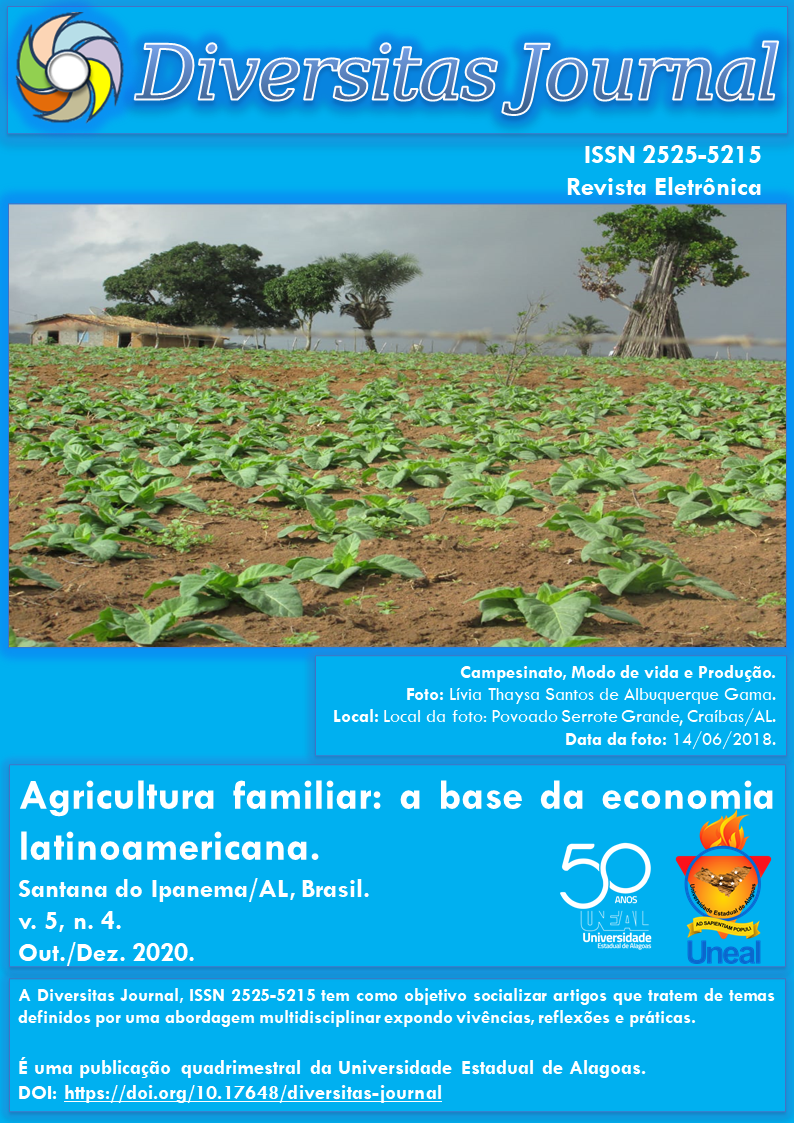Um estudo da porcentagem com o uso do material dourado no ensino fundamental
DOI:
https://doi.org/10.17648/diversitas-journal-v5i4-1515Abstract
ABSTRACT: The theme explored in this article is a conceptual study about percentage in the Early Years of Elementary School, aiming at an approximation of the same from its physical representation, concrete and manipulable. The problematizing question was expressed in the sense of: how to teach to the students the concept of percentage in a comprehensible way? The methodology was initially structured by bibliographical means, with readings and study notes of articles, textbooks and official documents of the State of Tocantins - Brazil, among others. The theoretical reference chosen was the Theory of Semiotic Representations Records that contributed to the conception of a didactic proposal of intervention, as well as an analysis of its implementation. The preliminary results point to a convergence of the operational objectives present in the official documents, however, the comparison of these with other didactic proposals of intervention identifies that the different forms of representation of a percentage seem little explored, and sometimes, has limited percentage representation to a fraction whose denominator is centesimal. It is worth noting the elaboration of a didactic workshop that overcomes these limitations and brings other forms of representation of a percentage that are explored simultaneously through registers that privilege the comparison between them.
KEYWORDS: Representation of Mathematical Objects. Semiotics. PIBID - Brazilian Program for teacher education initiation.
Metrics
Downloads
Published
How to Cite
Issue
Section
License
Copyright (c) 2020 Fabricio Mota dos Santos, Sinval de Oliveira

This work is licensed under a Creative Commons Attribution 4.0 International License.
The Diversitas Journal expresses that the articles are the sole responsibility of the Authors, who are familiar with Brazilian and international legislation.
Articles are peer-reviewed and care should be taken to warn of the possible incidence of plagiarism. However, plagiarism is an indisputable action by the authors.
The violation of copyright is a crime, provided for in article 184 of the Brazilian Penal Code: “Art. 184 Violating copyright and related rights: Penalty - detention, from 3 (three) months to 1 (one) year, or fine. § 1 If the violation consists of total or partial reproduction, for the purpose of direct or indirect profit, by any means or process, of intellectual work, interpretation, performance or phonogram, without the express authorization of the author, the performer, the producer , as the case may be, or whoever represents them: Penalty - imprisonment, from 2 (two) to 4 (four) years, and a fine. ”


















